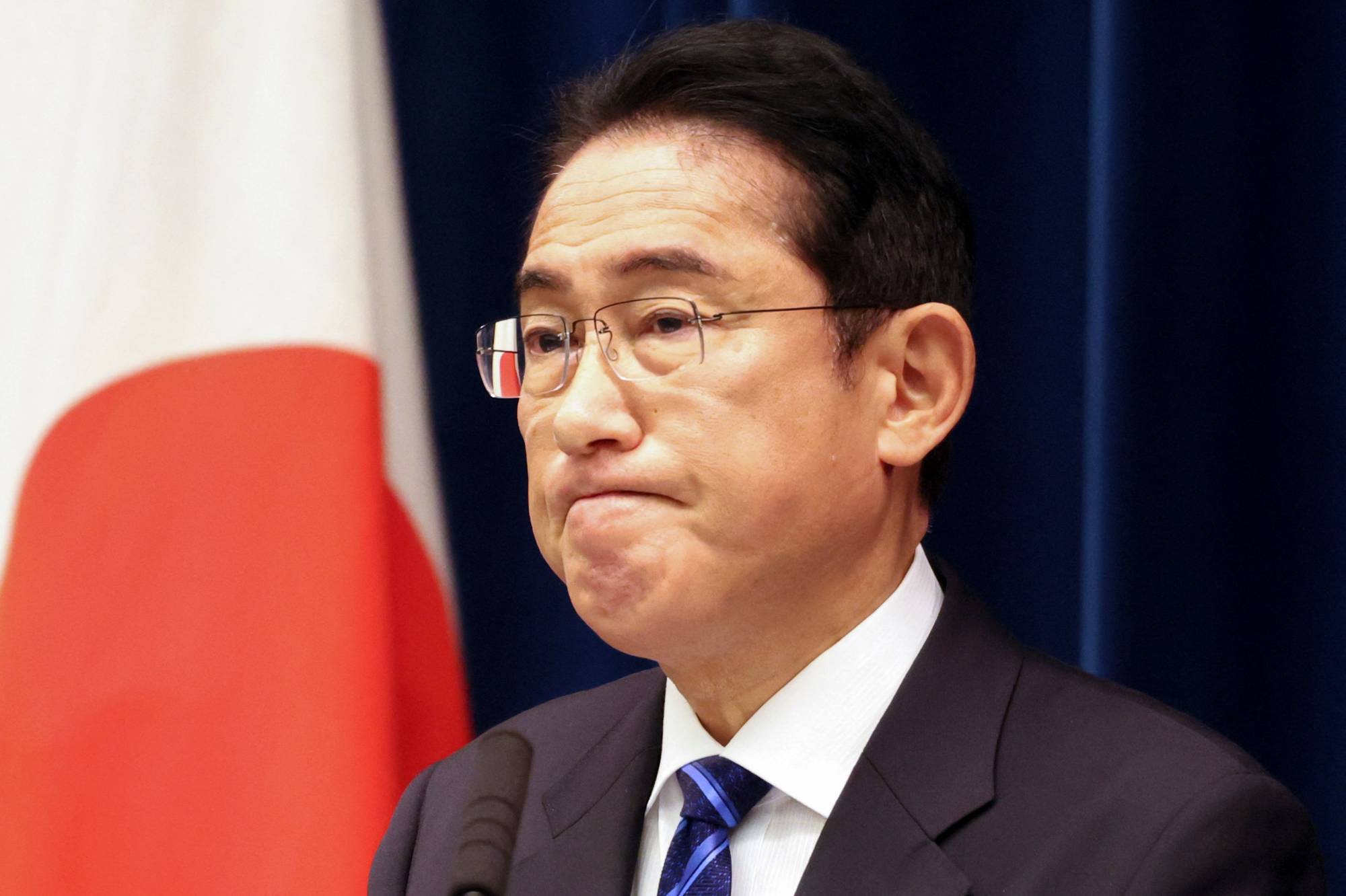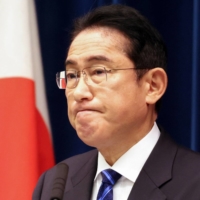Having committed to boosting defense spending over the next several years amid escalating geopolitical tensions, the government now faces the question of how to fund the extra outlay — and Prime Minister Fumio Kishida's suggestion that this could be through tax increases hasn't gone down well, even among Cabinet members and lawmakers from his own party.
In his comments over the weekend, Kishida did not specify which taxes should be raised but mentioned that placing an extra burden on individuals needs to be avoided. Local media have reported that a corporate tax hike is likely to be the main approach.
While Kishida has repeatedly talked about the envisaged defense budget increase, the possibility of tax hikes emerged only in the past week or so, catching some members of the ruling Liberal Democratic Party off guard.
“I don’t understand why the prime minister introduced (the tax hike plan) at this time,” economic security minister Sanae Takaichi said in a Twitter post, adding that a corporate tax hike would slow momentum toward increasing wages — a key part of Kishida's economic agenda.
While it is not yet clear what course of action the prime minister will settle on, he likely wants to resolve the contentious issue as quickly as possible.
“No national election is scheduled to take place for a while, so I think the circumstances allow (Kishida) to bring up policies that would have a negative impact before such elections,” said Shinichiro Kobayashi, a senior economist at Mitsubishi UFJ Research and Consulting.
Kishida's approval ratings have declined in recent months, but no national election is scheduled until 2025, and one will basically only happen if he calls it himself by dissolving the Lower House.
An election would almost certainly take place if the House of Representatives backed a no-confidence motion filed against the Cabinet, but such a scenario is highly unlikely, as the lower chamber is controlled by the LDP-Komeito ruling coalition.
Nonetheless, unified local elections will take place in the spring, but it’s unclear how Kishida’s popularity will affect those races, as each area has its own local issues.
The fact that Kishida said the government would not introduce tax hikes for the fiscal year starting April possibly highlights his concern about their impact on the local elections and his already low approval ratings, said Toru Suehiro, chief economist at Daiwa Securities.
Suehiro also said that Kishida seems to think that now is the best time to tackle some difficult issues.

Increasing defense spending has long been a sensitive political issue, but the combination of of the Russia-Ukraine war, the potential for a conflict over Taiwan and repeated missile launches by North Korea in recent months has made it easier.
“It’s likely that Kishida is thinking of taking care of some unpopular but critical policies this year and then trying to regain public support during the rest of his term,” Suehiro said.
Kishida said the government aims to spend a total of ¥43 trillion ($314 billion) between fiscal 2023 and fiscal 2027. The amount is about 1.5 times more than the ¥27.47 trillion mentioned in the Medium Term Defense Program for fiscal 2019 to fiscal 2023.
The government plans to secure funding by cutting other areas of spending and utilizing some surplus money and nontax revenue, but it is expected to fall short by some ¥1 trillion from fiscal 2027, so it is hoping to cover the difference by raising some taxes.
It is considering introducing a corporate surtax to raise ¥700 billion to ¥800 billion from businesses. Other possible options include raising the tobacco tax to bring in ¥200 billion, as well as converting about ¥200 billion from the special tax designed to finance reconstruction costs for areas affected by the March 2011 Great East Japan Earthquake.
It has been argued that an increased defense capability benefits all people living in Japan, and so the financial burden should be shouldered evenly. But Kishida ruled out a hike to individual income tax in an apparent effort to contain public opposition, as inflation has been hitting households.
“As for the consumption tax, I think the government wants to save (a raise) for covering increased social security costs (in the future),” Kobayashi said.
With the yen having weakened against the U.S. dollar, “companies’ earnings have been strong, so it’s easier to request them to shoulder the burden,” he said.
Suehiro said Kishida, who is close to the Finance Ministry and has emphasized fiscal health, probably wanted to map out more details on the tax hike plans — including possibly making changes to individual income tax — but he was unable to do so due to his low approval ratings.
“I think setting the corporate tax as the main source is quite unsatisfactory for the Finance Ministry, as it must have wanted to rely on the income tax as well,” Suehiro said. "Companies won’t be convinced of the idea and will think that it’s unfair."
Suehiro added that if Kishida tries to move too quickly, he might lose support from LDP members, potentially costing him his position. And given that some of them have already openly criticized Kishida, ensuring party unity will be a challenge.
Industry minister Yasutoshi Nishimura has said that the government should be “careful” about raising the corporate tax rate at a time when more companies are becoming eager to make investments in pursuit of innovation.
Some pro-spending LDP lawmakers have argued that the increased defense costs could be covered by issuing Japanese government bonds, but Kishida flatly ruled out that option.
“Defense capability, which will be drastically strengthened over the next five years, will need to be maintained and strengthened even further. ... To do that, it is imperative to secure stable funding sources,” Kishida said during a news conference Saturday.
“We must not rely on government bonds, considering our responsibility toward future generations.”
Information from Kyodo added



















With your current subscription plan you can comment on stories. However, before writing your first comment, please create a display name in the Profile section of your subscriber account page.